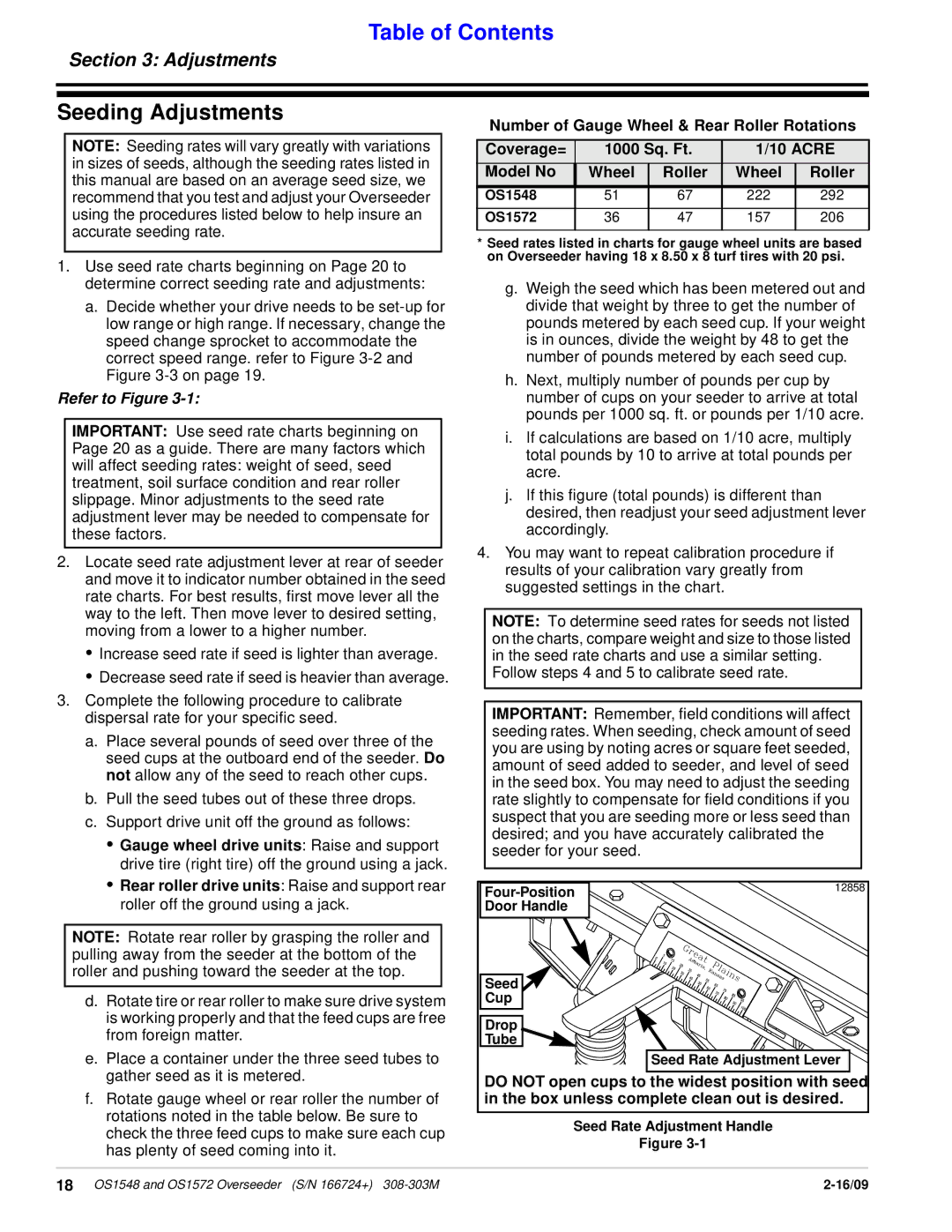OS1572, OS1548 specifications
The Land Pride OS1548 and OS1572 are outstanding implements designed to enhance the efficiency and productivity of landscape and turf maintenance. These models are part of Land Pride's lineup of high-quality equipment, built for durability and performance.One of the main features of the OS1548 and OS1572 is their robust construction. Each model is meticulously crafted using high-strength steel, which gives them a solid framework that can withstand rigorous daily use. This durability is complemented by high-quality welds and a corrosion-resistant finish, ensuring that these implements will serve users well over the years, even in challenging environments.
Both models are equipped with a high-capacity hopper that makes them suitable for all types of seed and fertilizer applications. The OS1548 has a 48-inch working width, while the OS1572 boasts a larger 72-inch width. This variety allows operators to choose a model that best fits their specific needs, whether for residential or commercial use. The ample hopper capacity allows for extended work periods without constant refilling, maximizing efficiency and minimizing downtime.
The OS1548 and OS1572 come with a unique broadcasting system that ensures even distribution of seeds and fertilizers across the treated area. This is crucial for achieving uniform growth and maximizing the effectiveness of inputs. The finely tuned spread pattern also reduces waste and ensures that materials are used economically.
Another innovative feature of these models is their user-friendly design. They come equipped with adjustable settings that allow operators to easily control the flow rate of the materials being spread. This feature is particularly beneficial for tasks that require precision, such as overseeding or applying specific fertilizers.
Both models are designed for versatility, capable of tackling various landscaping tasks. Whether you're preparing a new lawn, refreshing a garden bed, or maintaining a sports field, the OS1548 and OS1572 deliver exceptional results.
In conclusion, the Land Pride OS1548 and OS1572 are exceptional implements that combine strength, efficiency, and user-friendly features. With their robust construction, high capacity, and precise broadcasting system, they are ideal for anyone looking to enhance their landscaping capabilities. These models exemplify Land Pride's commitment to quality and innovation in turf management equipment.

